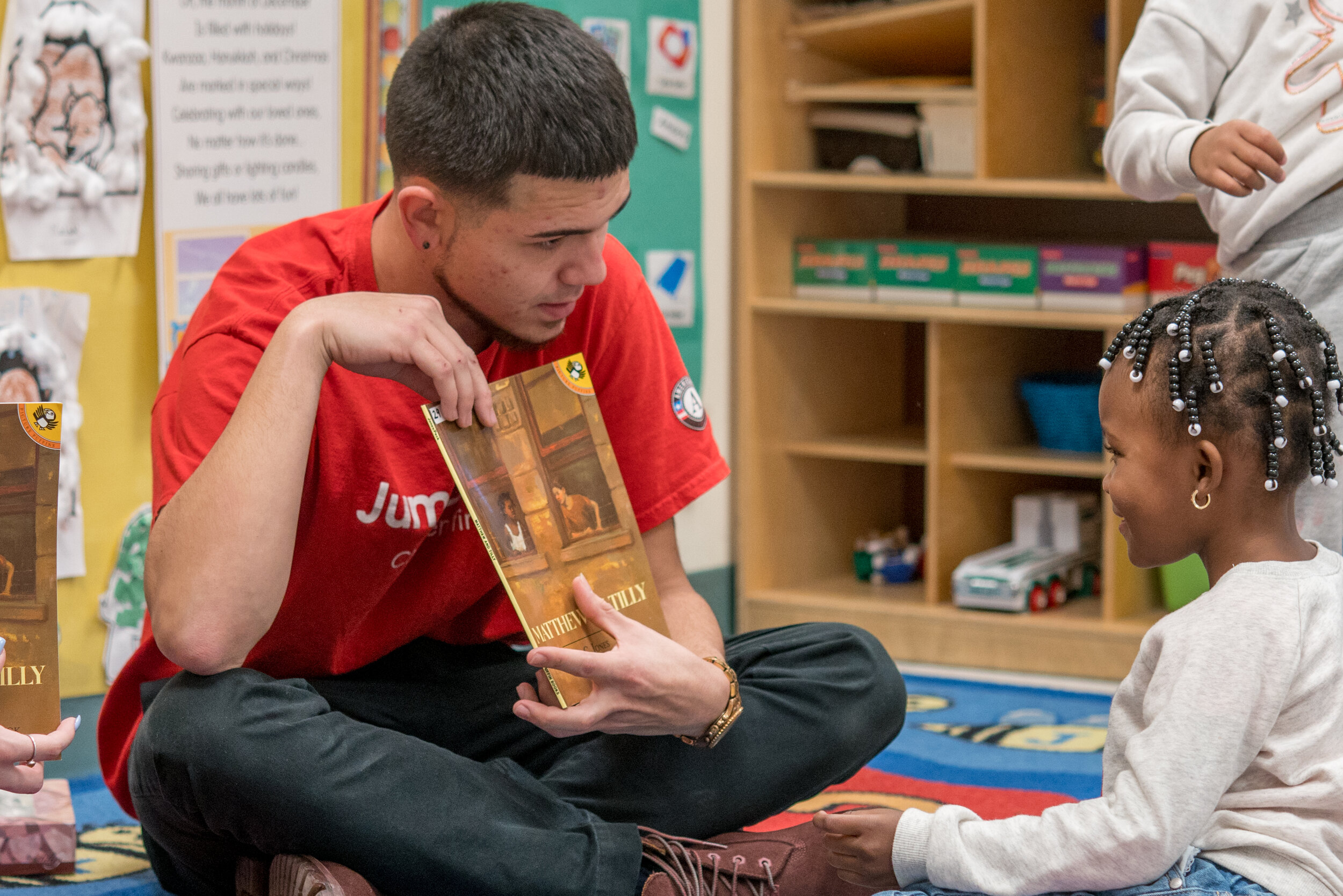Funders Seek to Jumpstart Early Ed with a Focus on Educators
/Photo courtesy of Jumpstart for Young Children
To improve early childhood education in the U.S., there’s a lot that needs to be done—including developing a reliable stream of skilled early educators. This is a key component of Jumpstart for Young Children’s mission. With operations in 15 states and the District of Columbia, the nonprofit has trained more than 50,000 college students and volunteers who’ve helped more than 120,000 preschool children gear up for kindergarten.
Jumpstart works to tackle the achievement gap, which starts to widen long before kids arrive at kindergarten. Research shows that children from low-income backgrounds start kindergarten 60% behind those in more affluent communities. Jumpstart partners with preschools where at least 75% of students per classroom are from low-income families.
Whether driven by the eye-opening impacts of COVID or a growing body of research on childhood development, early education is a major interest among donors and foundations these days, and we’ve been watching closely to see who’s backing this cause and which of the many strategies is getting funding—and results. Many, for example, have zeroed in on the teachers who make it work—or not. As IP recently reported, the Early Educator Investment Collaborative, which receives funding from the Heising-Simons Foundation, Buffett Early Childhood Fund, the Ballmer Group and the Stranahan Foundation), supports innovative early educator preparation programs around the country. And in California, the Oakland-based Kenneth Rainin Foundation is investing in an approach that provides in-depth training for early educators and has been shown to boost kindergarten readiness.
Jumpstart for Young Children, which was created almost 30 years ago, relies on federal and state government dollars, private donors, and funders including the Stranahan and Pinkerton Foundations. Jumpstart CEO Naila Bolus says more corporate funders are also stepping up to support early education. Jumpstart’s corporate funders include Franklin Templeton, TJX, and Vanguard, among other companies. (See a list of Jumpstart’s 2019-20 supporters here.)
“More foundations are coming to this space and more corporate funders are coming to this space, as well,” Bolus said. “You’re seeing businesses being able to articulate the importance of early childhood for their own workforce, but also for the workforce of the future.”
How it works
Jumpstart recruits students from over 70 colleges and universities and partners with preschool programs around the country. “We sit at this unique nexus between higher ed and early childhood,” Bolus said. “We’ve developed key partnerships on both sides; a really diverse group of higher ed partners and a really diverse group of early childhood partners.”
Jumpstart corps members receive about 40 hours of training before they set foot in a classroom and ongoing training after that. Corps members work as teacher aids to implement the Jumpstart curriculum and reduce the student-to-teacher ratio to 3 to 1 in almost every classroom where they work.
The results are impressive, as Jumpstart’s website documents in detail. According to a recent comparison study, for example, Jumpstart children make 1.5 times greater gains in literacy skills than children who don’t participate in the program.
“We implement an evidence-based, culturally competent curriculum that supports young children’s language and literacy and social emotional development,” Bolus said. “At the same time, with our college student corps members, we are helping to bolster the early education workforce to create a pipeline of diverse, well-prepared educators.”
Code Red for Early Learners
Bolus and many of her colleagues who work in early childhood education are worried about the impact of the pandemic on the youngest learners. The fallout of school closures and remote learning for K-12 students, including learning loss and mental health issues, has received widespread attention, but there have been tremendous impacts on young children, too.
Bolus points to a recent study by the Education Policy Initiative at the University of Michigan, which examined research on the impact of the COVID-19 crisis on young children’s educational experiences and learning outcomes. The study found that participation in ECE programs fell precipitously, and children who did participate in ECE programs, either in person or remotely, also suffered learning setbacks.
The researchers were unable to find assessment information for younger children, but data from teacher surveys and information from providers “raise concerns about the academic, socio-emotional, and executive function development of toddlers and preschoolers,” according to the report. For example, two large-scale surveys “show that about 30% of teachers working in-person and 80% of teachers working in hybrid/remote programs reported that children were learning less than in previous years. About 40% of in-person teachers and 60-70% of hybrid/remote teachers reported concerns that children’s social and emotional skills were developing more slowly than usual.”
Not only have young kids missed out on learning opportunities, they’ve lived through an experience that has been frightening and even traumatizing, in many cases. Depending on their families’ circumstances, these experiences may include job loss, homelessness, hunger, exposure to racial violence, and the illness and death of family members, friends and neighbors.
As we slowly make the transition back to “normal,” young children will, more than ever, need support and nurturing from adults who care about them. Programs like Jumpstart, which focus on social emotional learning through close, positive, adult-child relationships—what Naila Bolus calls “the key ingredient in our special sauce”—can play an important role in that healing.









